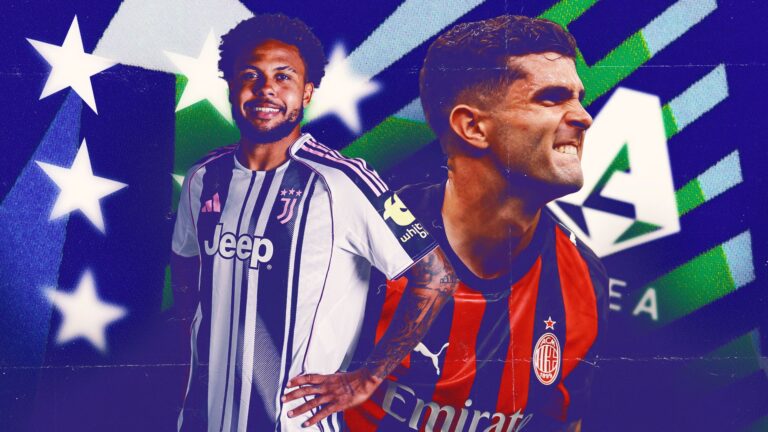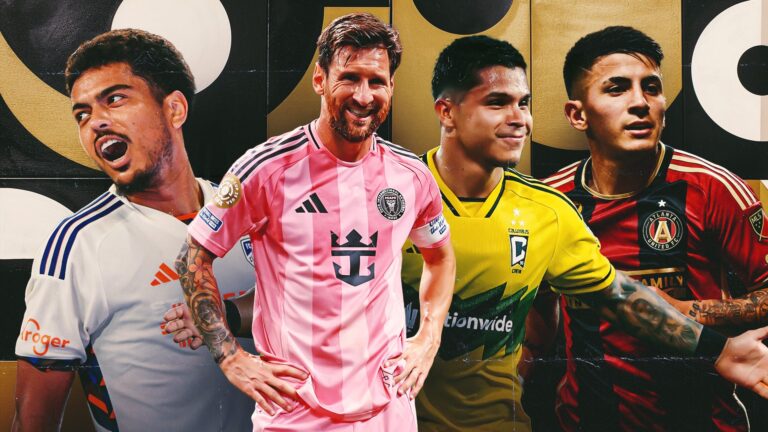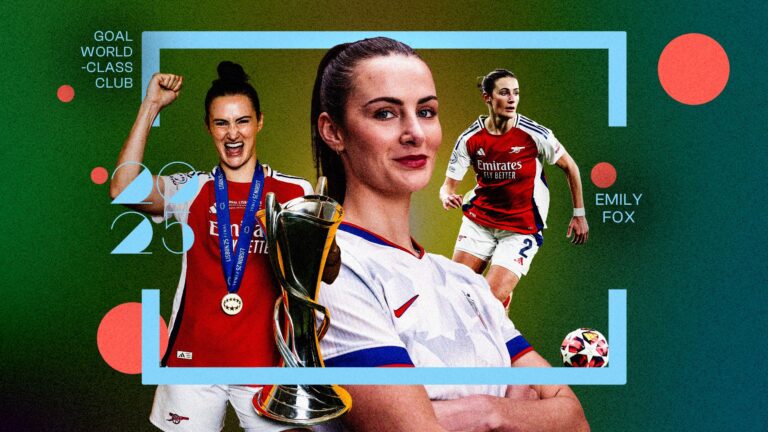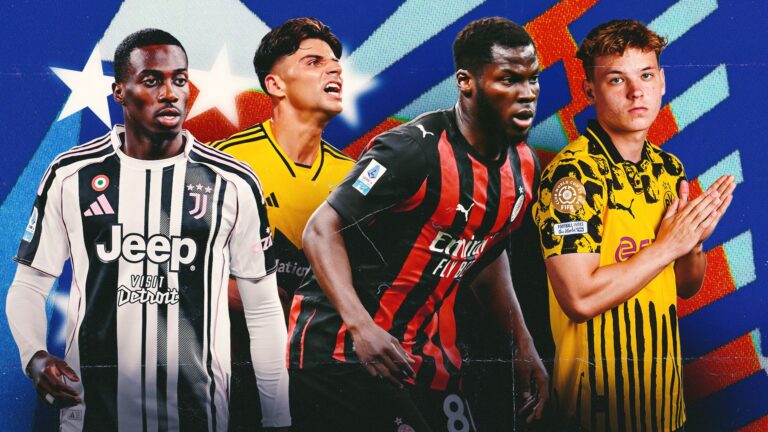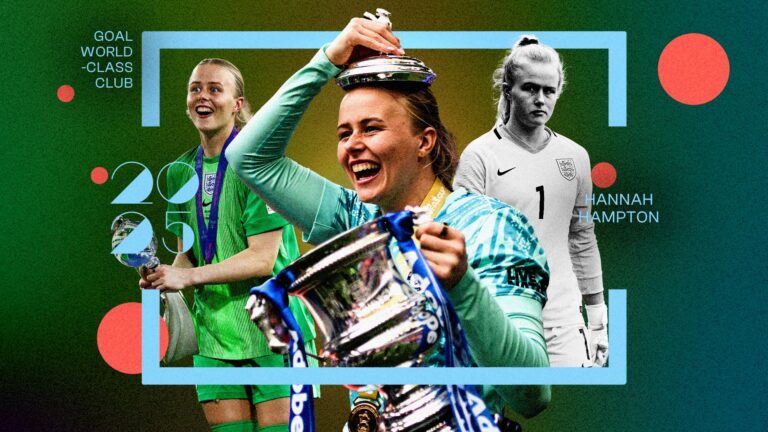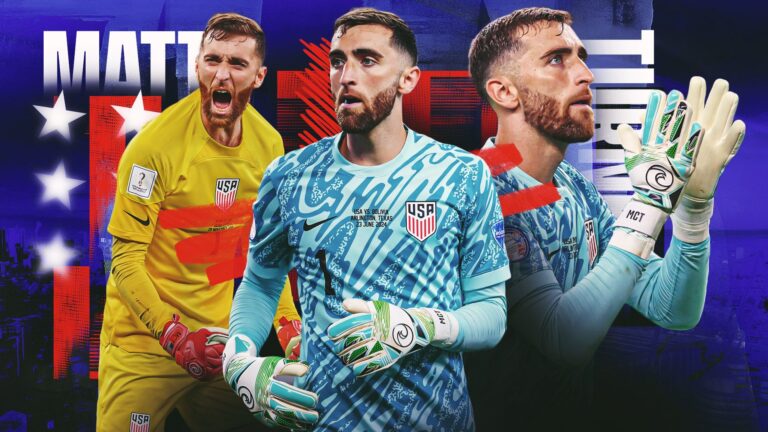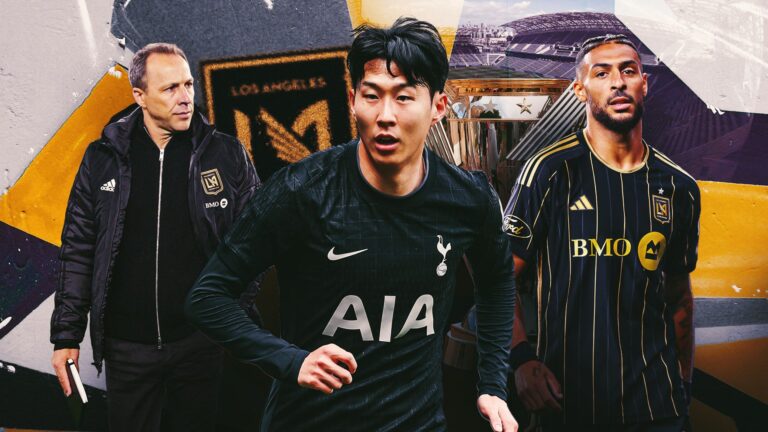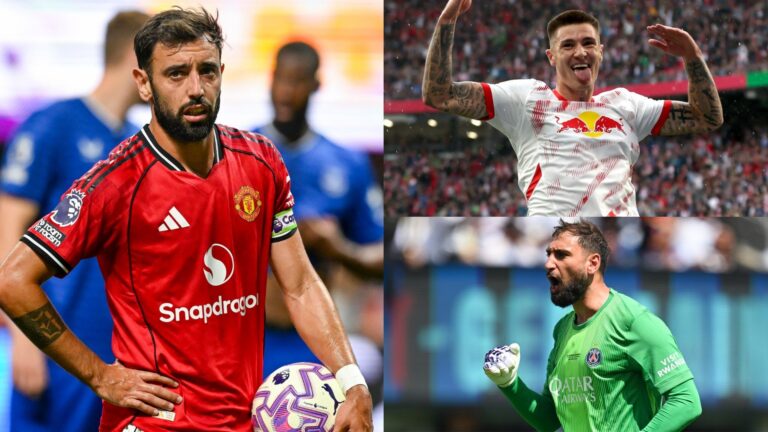When Nasser Al-Khelaifi and Qatari Sports Investors took over Paris Saint-Germain in 2011, they had two major objectives. The first was to create a football team that could compete in Ligue 1, leverage the city of Paris and establish themselves as a force in the Champions League.
The second – and perhaps more important – was to flesh out a global empire. That was the task Fabien Allegre, now PSG’s Chief Brand Officer, was assigned. At the time, it seemed an impossible challenge. The Parisians were a recognized name in the European soccer landscape, but they were nowhere near the power they have since become.
Flash forward nearly 15 years, and Allegre and his team have developed something immense. PSG isn’t as much of a football team as it is a movement, one in which on-field success is relevant, but not vital.
And, despite losing the Club World Cup final to Chelsea at MetLife Stadium on Sunday, Allegre and his team have achieved what they always intended to do: build something bigger than just a jersey and penetrate a global soccer market that often rejects those who try to disrupt. And now, they are the distinctive modern football brand.
“We have this unique capacity in the football world to address different kinds of audiences, considering that you can be a fan of PSG as a football club, but you can also be a fan of PSG the brand,” Allegre told BALLGM.







When Nasser Al-Khelaifi and Qatari Sports Investors took over Paris Saint-Germain in 2011, they had two major objectives. The first was to create a football team that could compete in Ligue 1, leverage the city of Paris and establish themselves as a force in the Champions League.
The second – and perhaps more important – was to flesh out a global empire. That was the task Fabien Allegre, now PSG’s Chief Brand Officer, was assigned. At the time, it seemed an impossible challenge. The Parisians were a recognized name in the European soccer landscape, but they were nowhere near the power they have since become.
Flash forward nearly 15 years, and Allegre and his team have developed something immense. PSG isn’t as much of a football team as it is a movement, one in which on-field success is relevant, but not vital.
And, despite losing the Club World Cup final to Chelsea at MetLife Stadium on Sunday, Allegre and his team have achieved what they always intended to do: build something bigger than just a jersey and penetrate a global soccer market that often rejects those who try to disrupt. And now, they are the distinctive modern football brand.
“We have this unique capacity in the football world to address different kinds of audiences, considering that you can be a fan of PSG as a football club, but you can also be a fan of PSG the brand,” Allegre told BALLGM.
It seems odd, these days, to consider a soccer landscape in which PSG aren’t relevant. They have one of the most ubiquitous jerseys around. They have a bumper deal with Nike, have partnered with the Jordan brand on numerous kits, and are known for their ability to penetrate not only the soccer world but also the lifestyle that surrounds it.
And Allegre is the architect of it all. Selling Paris as a concept was remarkably easy, he admitted. It was built on one fundamental principle: Paris is young, diverse, and ever changing. PSG, in representing that city, should follow the same principle.
More importantly, it was allowed to.
That meant that there was no firm foothold, no archaic guidelines to be followed. PSG are a relatively young team, founded in 1970. Having what some might call “limited history” was spun, cleverly, into an advantage. There were no iconic touchpoints or old stories to fall back on. His solution? Think about the future, and adjust in real time – because that’s what Paris, the city, does.
“How can you define in 2011 what will be the coolest brand in the sport industry in 2025?” he said. “It’s kind of silly, it doesn’t work. So you need to be focused on how you define yourself as a brand, you know? If you want to define Paris Saint-Germain as a human being, what will be his character? What will be his looks? What will be his soul? The soul will never change, but move a little bit.”
The brand has only grown since then. Other clubs in Europe have distinct values to uphold that they must always fall back on. Real Madrid are built on notions of nostalgia and power. Liverpool have to keep in touch with their Scouse roots. Napoli are deeply embedded in Naples. Barcelona will always be Catalonian, and “mes que un club.”
And although PSG are grounded in what Allegre dubs “cultural credibility” it’s their brand flexibility that sets them apart. They are able to adapt, move and subtly rebrand where other teams simply cannot.
“Sometimes it seems a bit chaotic, but it’s really well structured,” Allegre said. “Authenticity and cultural credibility, that’s our red line. Every human being has different senses of passion and emotion.”
Although Allegre is quick to stress that PSG the brand and PSG the football team don’t have a direct relationship – and that he cannot influence the signings made by Luis Campos – it was clear in the early days that the Parisians were thinking about big names.
Al-Khelaifi went after every star possible during his first few years in Paris. David Beckham, Zlatan Ibrahimovic and Edinson Cavani were all brought in. Later came Angel Di Maria, Neymar, Kylian Mbappe, and, of course, Lionel Messi. There were other signings, too, but the idea was to spend big and build a team that could be marketed globally.
And it made sense. Good players make good teams. You will likely win football matches when you sign them. Domestically, that brought immense success, with PSG winning 11 Ligue 1 titles since 2012. In the Champions League, though, it was far less fruitful, a loss in the final in 2020 serving as their closest flirtation with European glory.
But two years ago, Allegre was asked to pivot. PSG knew that they would lose Mbappe to Real Madrid at the end of the season. Messi was gone, as was Neymar. PSG could no longer be driven by stars. They made some strategic signings, focused on youth. This is now a team without the traditional famous name (although Ousmane Dembele seems to be the Ballon d’Or frontrunner).
Where some might have seen a massive hit to a global brand, Allegre saw a perfect opportunity to adapt.
“Everyone in the football industry was like ‘Without a star, your project is going to be done!’ No. We have all of the big drama, the change of strategy, and then all of the people like ‘No, you’re not going to succeed, blah, blah, blah. And then two years after we succeed,” Allegre said.
There was no longer a need to lean on the big names. Instead, Paris could be Paris.
Part of the reason PSG works so well as a brand is its unapologetic pursuit of brands and cultural touchpoints outside of soccer.
There are no constraints, and no expense spared. Seven years ago, PSG collaborated with Jordan, signing a three-year partnership with the company. Since then, they have extended it, releasing capsule collections and jerseys every year.
Allegre said it was a turning point – especially in the American market.
“It was massive when we launched seven years ago, because Jordan was super big in the U.S. That was the first time when, from a cultural perspective, we mixed basketball and football,” Allegre said.
Since then, they have focused on expanding in the NBA scene. They have a deal with the Houston Rockets’ Kevin Durant, who is an investor in the club. Golden State’s Jimmy Butler was seen at some of their Club World Cup activation events in Los Angeles.
But it’s not just basketball. The Parisians have stretched outside sports, tapping into music, art and fashion to create something that breaks cultural barriers. In America, where soccer culture is still defining itself, the club simply has to give fans resources – effectively, stuff to buy and things to interact with – and then let them interpret PSG as they want.
“With no arrogance to say, we’re happy to be a part of the U.S., and we give you some guidelines, but it’s more for you to use us, and say How do you see your own Paris Saint Germain?” he said.
The central approach as PSG look towards the future, Allegre said, is to anticipate the interests of the next generation. In effect, how can the Parisians listen to the kids? If they are the future, and they will define the sport for years to come, how can PSG facilitate its growth? It’s what they tried to do in 2011, and they continue to do now – even if that means rubbing some of the old heads the wrong way.
“Sometimes we push a little bit far the boundaries, and it’s not clear for what I call ‘The old voice of football’, but that’s the way we’ve been thinking,” Allegre said.
It’s something that soccer itself is often reluctant to confront. There is an appeal, charm and authenticity to football for 90 minutes, built on legacy brands that have always been relevant. But while some have pushed back, PSG have embraced it.
They were among the first European clubs to throw themselves into E-sports in 2016. They collaborated with U.K. rapper Central Cee for their third kit in 2024, and tapped into The Weeknd’s American appeal with a capsule collection last month.
Traditional soccer? No. And that’s the way PSG like it.
“The main focus for us is always to be in line with our positioning, which is to be the club of the new generation, meaning wherever you are coming from, wherever the interest you have in PSG is coming from, we are happy to host you in the family,” Allegre said.
Other clubs, in fairness, have done their part in recent years. Dortmund increased their presence with fan groups in recent years – noticing a growth in fandom and viewership rooting back to the Jurgen Klopp years. Milan have collaborated with the New York Yankees and Off White on clothing brands.
Juventus, Man City, Real Madrid and Liverpool have all leveraged connections with the American market. Bayern Munich have a New York office. Preseason friendlies have been played in the U.S. for years. It is no secret that the United States – fresh off hosting the Club World Cup, with the 2026 World Cup on the horizon – is a massive market waiting to be mined.
“We’re not a club that’s coming, that’s in and out,” Marc Lingenhoff, managing director of Borussia Dortmund Americas, told BALLGM. “We’re not coming in, take a check and disappear for a year or two and then come back. That’s not us. We want to grow consistently and sustainably over time.”
PSG’s marketing success reached its zenith during the Club World Cup. Yes, PSG lost in the final. They were thumped by Chelsea. But they had already had their signature triumph on the pitch this season – winning the Champions League for the first time in club history.
This summer, commercially, served as vindication for the work they have put in for so many years to build a brand.
Everything was wrapped up in one location at the PSG house in Los Angeles. An event space was created that served various parts of Parisian life and culture. They offered pretty much everything, from fashion shows, to a rooftop football pitch, to a coffee bar. There were celebrity appearances and exclusive clothing lines. More than 12,000 fans showed up.
“The response has been very encouraging,” Allegre said, “it has become a vibrant space to celebrate our identity – sporting, cultural, and creative – with fans, artists, and local communities. While it’s our first time creating this kind of activation in the U.S., it’s been a great opportunity to bring our brand to life in a different way.”
And there was a commercial buzz, too. The 2025 home kit was the fastest selling shirt in PSG history. The club website saw a 744% revenue spike on the day of the CWC opener. U.S. retail stores posted a 225% sales increase as of July 12, according to the team.
Online has been no different. PSG have gained 1.4 million followers on global social media accounts combined in the last three weeks. They are now No. 2 in terms of reach on TikTok, and No. 5 among soccer clubs in the United States in total views.
This is what soccer is nowadays: content. Yes, sporting performance matters. And yes, there is always room for the legacy fan who lives just a few miles from the ground where the team plays. There will always be local season ticket holders in the stands, and the loyalists who have supported their club for generations. That will not go away, Allegre hopes.
But this is a sport in which iShowSpeed got the only exclusive interview with FIFA president Gianni Infantino ahead of the CWC. Modern football fans, especially in America, care about more than just what happens on the pitch. Their interests lie beyond the white lines. It’s about looking good, feeling part of a movement, one that taps into fashion, music and online culture – something that exists outside of Parisian borders.
With that guiding principle, PSG are not only the biggest brand in football. They are what modern football looks like. And, as Allegre puts it: “There is no ceiling.”


